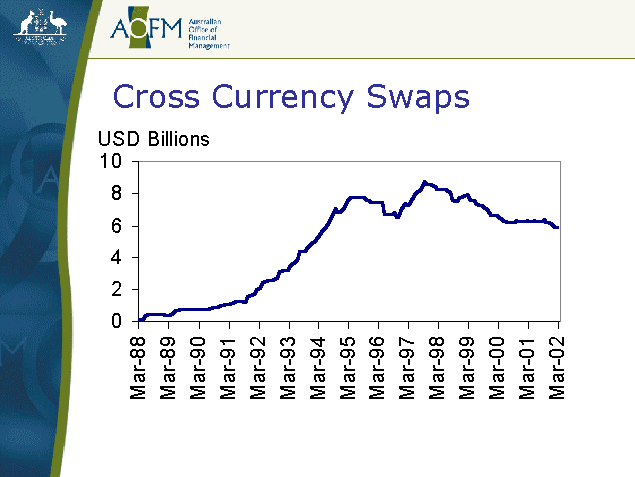CROSS CURRENCY SWAP
Post on: 20 Июль, 2015 No Comment

CROSS CURRENCY SWAP
DESCRIPTION
Similar to an Interest Rate Swap but where each leg of the swap is denominated in a different currency. A Cross Currency Swap therefore has two principal amounts, one for each currency. Normally, the exchange rate used to determine the two principals is the then prevailing spot rate although for delayed start transactions, the parties can either agree to use the forward FX rate or agree to set the rate two business days prior to the start of the deal. With an Interest Rate Swap there is no exchange of principal at either the start or end of the transaction as both principal amounts are the same and therefore net out. For a Cross Currency Swap it is essential that the parties agree to exchange principal amounts at maturity. The exchange of principal at the start is optional (see Corporate example below).
Like all Swaps, a Cross Currency Swap can be replicated using on-balance-sheet instruments, in this case loan and deposits in different currencies. This explains the necessity for principal exchanges at maturity as all loans and deposits also require repayment at maturity. While the corporate or investor counterparty can elect not to exchange principal at the start, the bank needs to. This initial exchange can be replicated by the bank by entering into a spot exchange transaction at the same rate quoted in the Cross Currency Swap.
Loosely speaking, all foreign exchange forwards can be described as Cross Currency Swaps as they are agreements to exchange two streams of cashflows (in this case a stream of one!) in different currencies. Many banks manage Long Term Foreign Exchange Forwards as part of the Cross Currency Swap business given the similarities. Like all FX Forwards, the Cross Currency Swap exposes the user to foreign exchange risk. The swap leg the party agrees to pay is a liability in one currency, and the swap leg they have agreed to receive, is an asset in the other currency.
One of the major market users for Cross Currency Swaps are Debt issuers, particularly in the Euro-markets where issuers sell bonds in the cheapest currency and swap their exposure to their desired currency (see Pricing).
A Cross Currency Swap where both legs are floating rate is part of the Basis Swap product family. Cross Currency Swaps are also known as a CIRCA (a Currency and Interest Rate Conversion Agreement).
EXAMPLE
Investor
A fund manager is seeking to purchase 3 yr DEM assets with a minimum credit rating of AA and a yield in excess of LIBOR plus 12. A review of the DEM Floating Rate Note market and even the DEM fixed rate bond market swapped into floating rate using an Asset Swap, shows that no such assets exist in reasonable volume. A 3 yr GBP AA rated Corporate bond can be purchased at a yield of GBP LIBOR plus 18bp for a total price of GBP 10,000,000. The prevailing exchange rate is 2.50. The fund manager can purchase the bond for GBP10,000,000 and simultaneously enter into a Cross Currency Swap agreeing to pay GBP LIBOR plus 18bp and receive DEM LIBOR plus 15bp (see Pricing for an explanation of the price differential). The spot rate is set at 2.50 and the fund manager elects to exchange principal at the start.
The initial cashflows are as follows:














